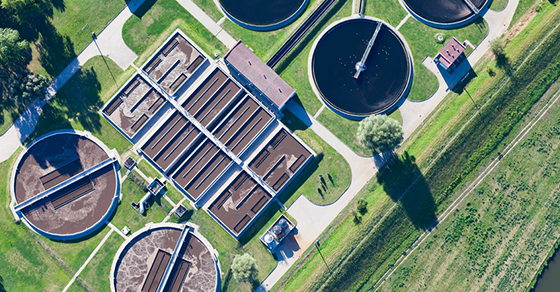
It takes a lot of energy and money to treat wastewater.
The electrical cost of wastewater treatment often accounts for more than 25 percent of the total cost associated with operating wastewater treatment plants (WWTP). There’s a growing interest and need for sustainable energy, especially in these treatment facilities. While there are many solutions to battle wastewater treatment plant costs, investing in sustainable energy is one of the most cost-effective.
With the prospect of state and federal grants for green energy from renewable resources, cogeneration or combined heat and power (CHP) is growing in popularity. These efficient systems are being used for wastewater treatment plants for a variety of reasons – to fill the need for standby power, as a free fuel alternative to high natural gas prices, increased interest in sustainable energy, and government incentives in the form of grants.
So, what exactly IS cogeneration?
Cogen (as it is commonly referred to) is a thermodynamically efficient use of fuel. In separate production of electricity, some energy must be discarded as waste heat, but in cogeneration this thermal energy is put to use.
This is a reliable, cost-effective option for municipal WWTPs that have or are planning to install anaerobic digesters. The methane gas flow created in these digesters and can be used in a CHP system as fuel to generate reliable electricity and heat for the WWTP.
Benefits of a well-designed cogeneration system powered by digester gas:
- Produces power at a cost below retail electricity.
- Displaces purchased fuels for thermal needs.
- May qualify as a renewable fuel source under state renewable portfolio standards and utility green power programs.
- Enhances power reliability for the plant.
- Produces more useful energy than if the WWTP were to use biogas solely to meet digester heat loads.
- Reduces emissions of greenhouse gases and other air pollutants primarily by displacing utility grid power.
The EPA has a report of the technical and economical potential for cogeneration energy at wastewater treatment facilities right here. The analysis found that cogeneration/CHP is a strong technical fit for many facilities. It can also be a worthwhile investment for areas where local electricity prices are very high or unstable.
What technologies are currently considered for use with digester gas from wastewater treatment plants?
-
Internal Combustion Engines: IC engines (reciprocating type) are the most common and proven technology for WWTPs using DG fuel.
-
Microturbines: this is another cogen technology that has become more common during the last few years.
-
Gas Turbines: Gas turbines have long been used with natural, digester, and landfill gas fuels. Cost-effective for a certain size of cogen facility.
-
Fuel Cells: Fuel cells have high capital cost and maintenance costs so may not be as cost-effective without grant monies.
-
Steam Turbines: These simple, reliable machines are some of the oldest and most common, especially for generating electricity, and typically require little maintenance.
-
Stirling Engines: The most recent tech to enter the market, Stirling Engines have been around for a long time (spacecraft and military applications) but have only recently been applied to commercial power generation.
How can your city or town benefit from cogeneration technology in your wastewater treatment facility?
Let’s use an example close to home.
Wessler Engineering helped the City of West Lafayette utilize SRF financing to establish a Fats, Oils, and Grease (FOG) receiving facility and a Cogeneration Facility at its wastewater treatment plant. FOG receiving can generate up to an estimated 30% increase in methane gas production which is used to generate electricity, providing environmental as well as economic benefits. The City saved over $100,000 in 2011 by cogenerating electricity and reducing natural gas consumption. Up to 25% of the plant's power needs are supplied by methane-generated electricity via the use of micro-turbine generation. Direct FOG injection also generates tipping fees, providing the City with a new revenue source.
The City has also earned the U.S. EPA's Performance and Innovation in the SRF Creating Environmental Success (PISCES) award and was recognized as a “Green Power Partner” by the EPA in 2009 for reducing the carbon footprint by generating green power on-site.
Does your city use cogeneration technology in their wastewater treatment facilities? Leave a comment or question below to let us know what's going on in your area.
Tags

